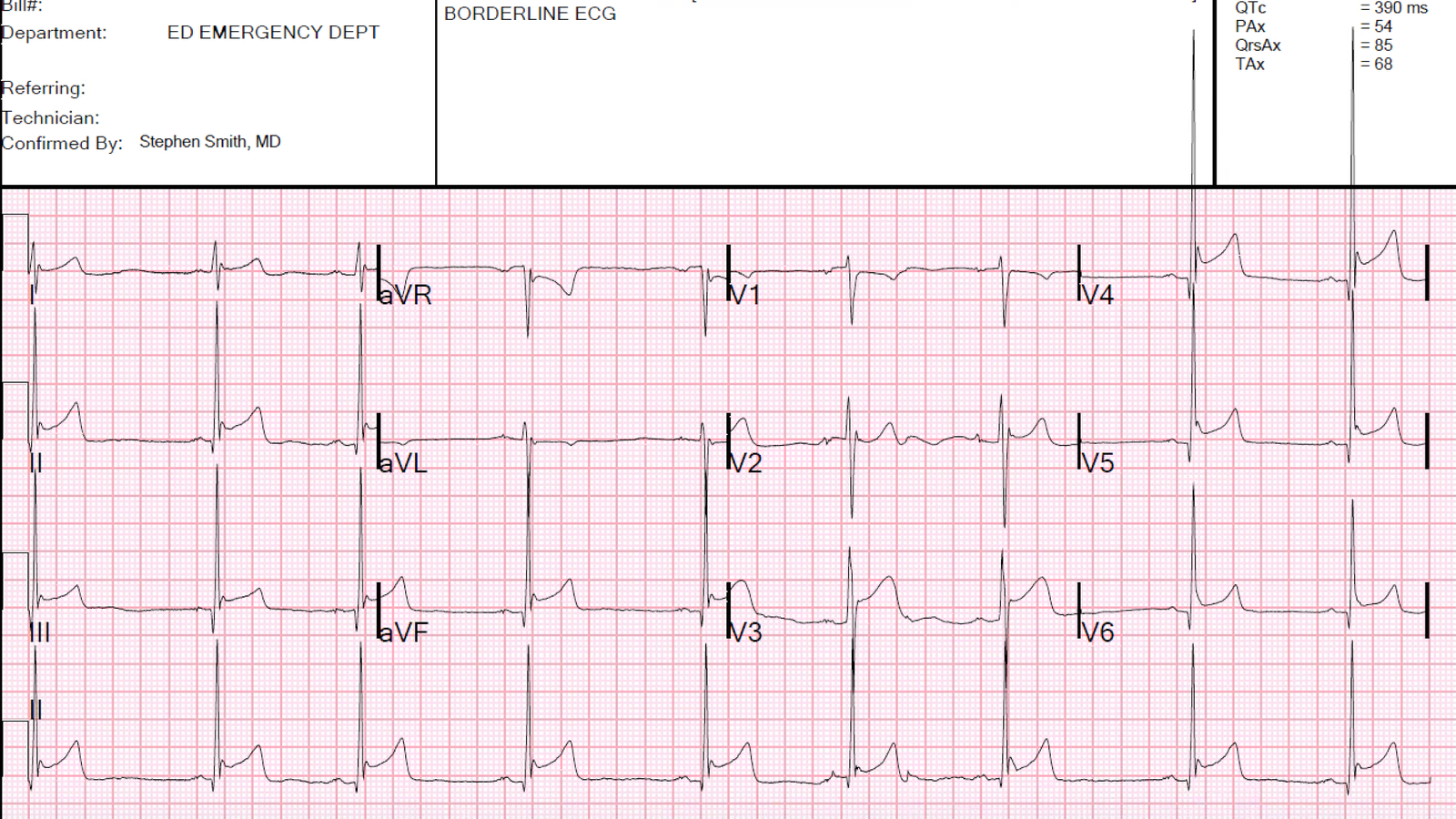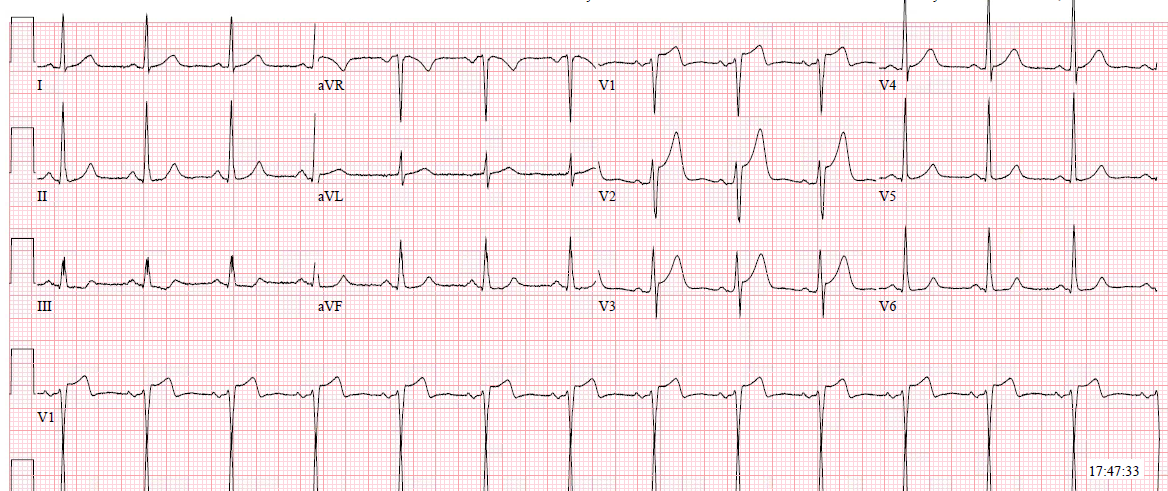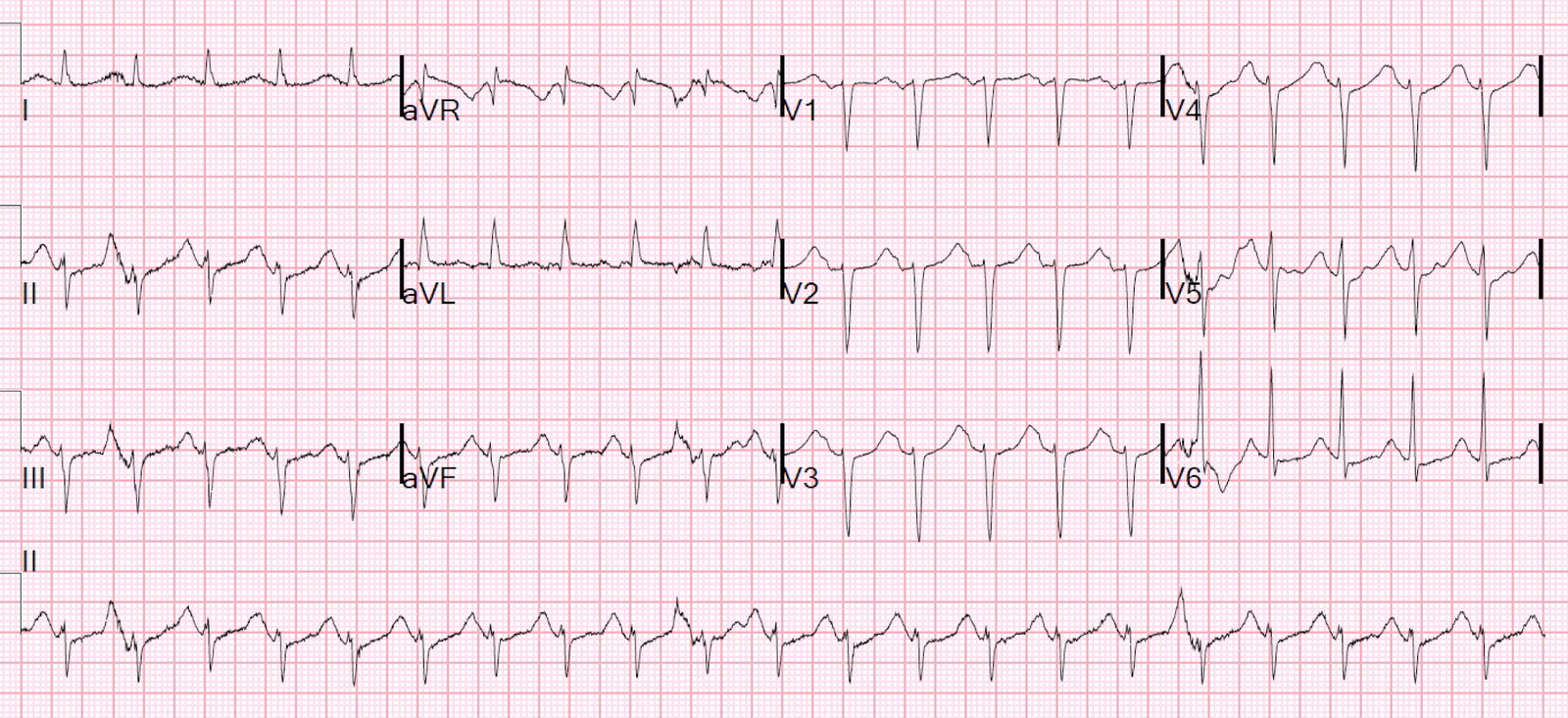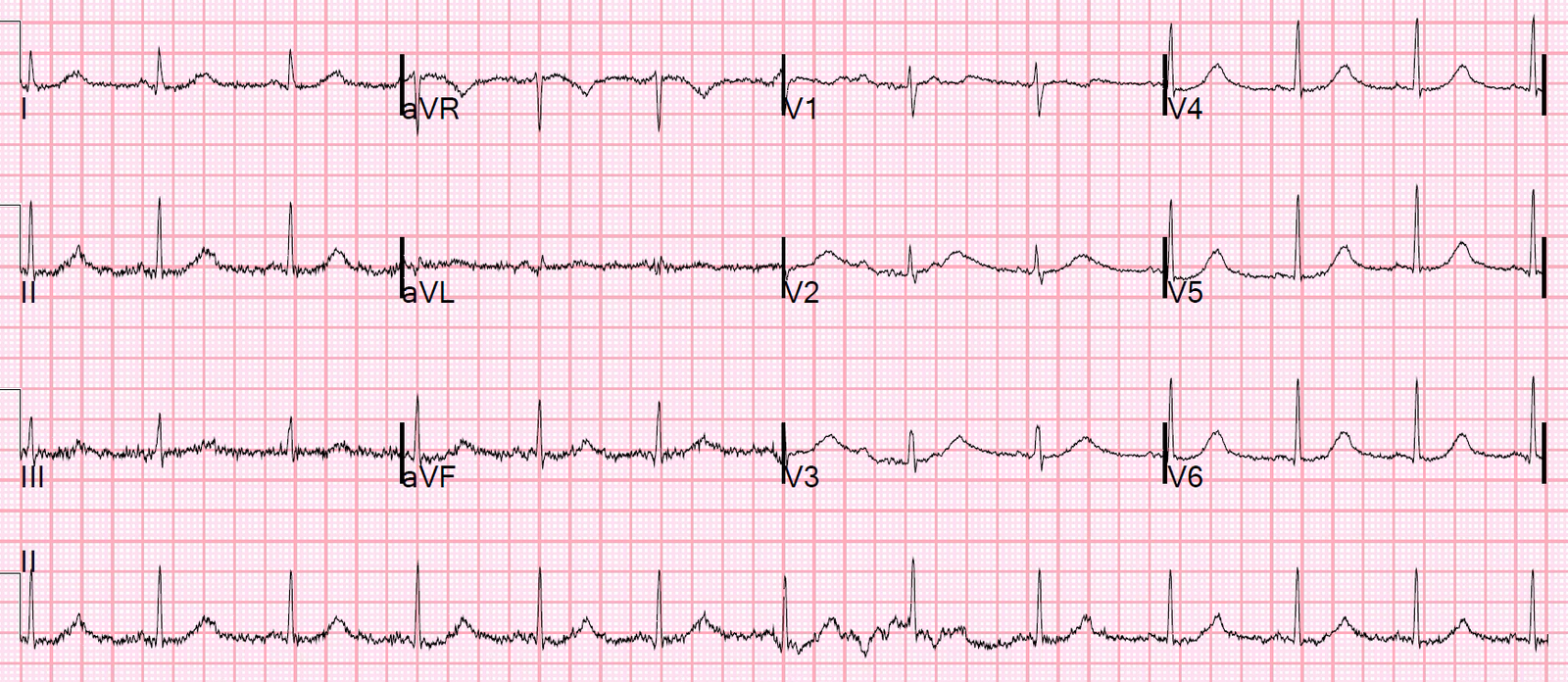911 was called for an 18 year old who had altered mental status after using K2 (a recreational drug). The medics put the patient on the monitor and saw ST elevation. They then recorded a prehospital 12-lead (not shown, as it is identical to the ED ECG), which showed marked ST Elevation. The computer diagnosed “Pericarditis.” They were very worried, and brought the patient to the “Stabilization Room” for critically ill patients.
On arrival, I looked at the prehospital ECG (again, identical to the ED ECG shown below):
 |
| What did I think? |
I immediately said “Normal Variant ST Elevation,” and directed the patient to our “Special Care Unit” for altered mental status from drugs and alcohol.
This is not pericarditis, nor is it STEMI. Get to know this pattern just like you would get to know a friend. I called him “Jack,” and told the residents to get to know Jack.
Jack often has high voltage QRS, has marked J-waves (they look almost like Osborn waves). There is a relatively short QT interval. The ST Elevation is towards leads II and V5. Thus, there is no reciprocal ST depression in aVL. [In fact, these could be Osborn waves, but they were not: the patient was not hypothermic.]
Although the T-wave is negative in aVL, it is NOT T-wave inversion, as the QRS-T angle is narrow (QRS axis is 85 degrees, almost directly inferior; T-wave axis is 68 degrees — angle is only 17 degrees. Both these measurements are accurately made by the computer algorithm.)
How do I know it is not pericarditis? First, the patient denied any chest pain! Second, normal variant STE is far more common that pericarditis. There are J-waves, no PR depression, and no Spodick’s sign (downsloping T-P segment — of questionable reliability).
It is very common for Normal Variant STE to be misdiagnosed as pericarditis. Does this have adverse consequences?? It may. Take a look at this case that was written by Pendell Meyers when he was a medical student: due to misdiagnosis of the ECG as “pericarditis”, a patient’s chest pain was misattributed to pericarditis and the correct diagnosis of pulmonary embolism was ignored:




why do you call (often) this pattern "Normal Variant STE" and
not simply Early Repolarization ?
merci
Al
Early Repolarization is now very precisely defined, not by ST elevation, but by presence of J-waves. It is a syndrome that identifies patients with a higher risk of long term VF, whereas normal variant STE is a STEMI mimic.
very interesting case, and review. thank you, Stephen.
tom
Forgive me if I am missing something, but aren’t there j-waves in this ecg?
Thank you for your time
Yes, that is why I say "there are marked J-waves."
Hoping to see a post on BER, as even I called it BER.
Thank you for the case.. 😊
What do you mean by "the ST elevation is toward leads II and V5"? How do you tell that and what significance does that have?
Danica,
read this post which talks a lot about ST vector (ST axis): http://hqmeded-ecg.blogspot.com/2012/02/five-primary-patterns-of-ischemic-st.html
Steve
Hi Steve,
Could this be a case of LVH? I mean, there is very high voltage and there are secondary ST-T changes. Thank you.
It is possible, as is HOCM, but a skinny 18 year old frequently has voltage like this.